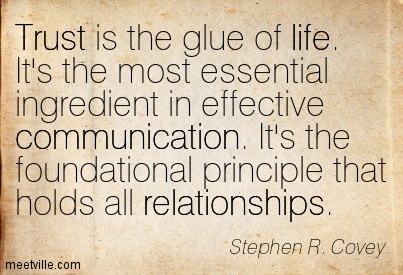This is the first in a series of posts about how to use the first six weeks of school to build a platform for more in depth cultural responsive teaching throughout the year.
I had my first class last night. For the second year, I am teaching the Foundations of Literacy to a crop of new pre-service teachers who are about to start their student teaching this fall.
As a culturally responsive educator, my first order of business isn’t usually the technical stuff – the syllabus, grading, and assignments even though students ask about these things and worry about how to get an A. Instead my focus is relational. But it’s not just about getting friendly. We are trying to generate trust. Trust is the byproduct of rapport — that sense of connection and goodwill you feel when you’re getting along with classmates or colleagues.
Trust is the culturally responsive teacher’s secret weapon. I am always reminded how important it is to use the first few class meetings to create a sense of community so that we feel like we can be vulnerable as learners.
So I focused last night on creating a “trust-container” for us to work within throughout the semester by using tools and processes. They allowed us to reveal a bit about our racial identities and our experiences with diversity during our high school days in a safe way. This rapport is critical because I know down the road I am going to have to help them stretch themselves and try new teaching moves. And that’s going to feel scary. It’s going to create anxiety and resistance. And it is my job to help them push past it.
The analogy that comes to mind is when we are going to have surgery. Before you get anywhere near the operating table, the surgeon knows you are nervous so he shows care and compassion on an emotional level. You begin to relax and begin to trust him.
Just like we trust when we put our life in a surgeon’s hands when we go under the knife, students do the same when they put their brain and their learning in the teacher’s hands.
You have the first six weeks to create trust between you and your students and among students in the classroom that sets the stage for rigorous learning.
The bottom line is we don’t trust people we don’t know.
Useful Tools to Help Us Share Our Selves
Turns out our brain secrets the bonding hormone, oxytocin when we hear someone’s story or are privileged to have them share personal information about themselves. The brains of the storyteller and the listen fire in unison and we begin to feel empathy and compassion toward one another.
As teachers we sometimes need to engineer those opportunities to hear one another’s stories. That’s where protocols come in. A protocol is a set of step-by-step guidelines—usually in the form of a simple one- or two step process —that is used by educators to initiate certain conversations or learning experiences.
Here are two activities particularly suited for trust building.
The Paseo Protocol
The the Paseo is a great tool for instant connection. The protocol allows students to share elements of themselves around identity, diversity, beliefs and values that they usually have to hide in school. It is a movement-based activity that begins with individual reflection and then flows into personal storytelling, using inner and outer circles that move. It’s pretty cool to see in action. It’s an extremely flexible process that can be used in upper elementary schools through high school. The theme of the questions and prompts can be tailored to the focus of a lesson, subject area or topic being studied.
Go here to get the instructions.
Where I am From Poems
The “Where I’m From” poem format was created by teacher/writer George Ella Lyon in 1993. Students first start with creating a list of words related to aspects of their lives and then plug those words into a particular format. The end result is a personal poem that paints a picture through words and images. Despite following a formula, the process is rich and engaging because the question of where you are from taps into our desire to revealing our authentic selves.
Here is a template to get you started.
Your turn: How do you build trust with your students at the beginning of the school year? What tools and techniques help generate rapport and a sense of connection?


